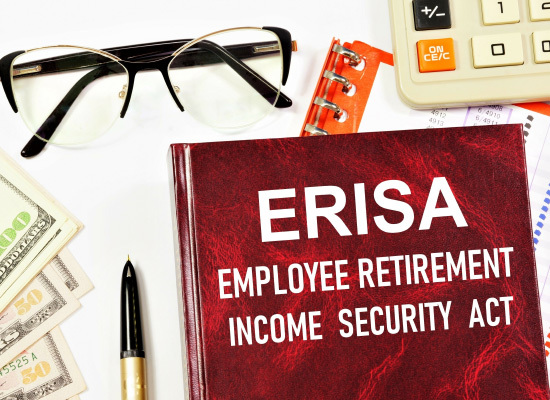 Contact
About Us
Articles
Home
Contact
About Us
Articles
Home

A 403(b) plan, also known as a tax-sheltered annuity (TSA) plan, is a retirement savings vehicle designed for employees of certain tax-exempt organizations, including public schools, hospitals and religious entities. Similar to a 401(k) plan, a 403(b) offers individuals the opportunity to save for retirement on a tax-deferred basis. The distinguishing feature of a 403(b) plan is that it allows employees to invest in annuities as well as mutual funds.
One of the primary benefits of a 403(b) plan is its tax advantages. Contributions made to the plan are deducted from an employee's taxable income in the year they are made.
This means that contributions are made with pre-tax dollars, allowing individuals to potentially lower their current tax liability while simultaneously saving for retirement. The earnings generated within the account are also tax-deferred until withdrawn at retirement age, allowing them to compound over time without being diminished by annual taxes.
Another notable aspect of a 403(b) plan is its ability to offer annuities as investment options. Annuities are insurance contracts that provide regular income payments in exchange for an initial investment or series of payments.
This feature can be particularly beneficial for individuals looking for guaranteed income during retirement. By investing in an annuity through their 403(b) plan, employees can ensure a steady stream of income after they stop working.
While initially established with educators and nonprofit sector employees in mind, eligibility for participation in a 403(b) has expanded considerably over time. Today, many public school teachers and health care professionals take advantage of these plans; however, employees from other nonprofit sectors may also have access to this type of retirement savings option.
It's important to note that contribution limits and available investment options may vary depending on the employer sponsoring the 403(b). A 403(b) plan offers individuals employed by tax-exempt organizations a valuable tool for saving toward retirement.
With its tax-deferred contributions and investment options that include annuities, a 403(b) plan provides employees with the opportunity to build a secure financial future.

ERISA, short for the Employee Retirement Income Security Act, is a federal law enacted in 1974 that establishes guidelines and regulations for retirement plans offered by private employers in the United States. The primary goal of ERISA is to protect the interests of employees participating in these plans by ensuring certain standards are met regarding their administration and obligations.
Under ERISA, employers who offer retirement plans, including 403(b) plans, must adhere to specific rules and requirements. These include providing detailed disclosures about the plan's features and investment options, ensuring that fiduciaries act solely in the best interest of participants, establishing minimum vesting standards for accrued benefits, offering participants the ability to diversify their investments and providing a claims procedure for participants seeking benefits.
ERISA also imposes reporting and disclosure requirements on plan administrators. They are required to provide participants with annual reports detailing information about plan expenses, funding status and any changes in administrative procedures.
Additionally, ERISA establishes responsibilities for plan sponsors or administrators through its fiduciary provisions. These provisions hold them accountable for prudently managing plan assets and ensuring that all actions taken are solely in the best interest of plan participants.
It is important to note that while ERISA applies to most private employer-sponsored retirement plans such as 401(k)s or pension plans offered by corporations, it does not typically cover government-sponsored or church-related plans. However, certain nonprofit organizations like universities or schools may choose to offer a 403(b) plan subject to ERISA regulations voluntarily.
ERISA plays a crucial role in safeguarding employees' retirement savings by setting forth guidelines for employers offering private retirement plans like 403(b)s. Its regulations promote transparency and accountability among plan administrators while aiming to ensure that employees have access to essential information concerning their investment options and overall retirement benefits.

The main difference between a 401(k) and a non-ERISA 403(b) account lies in the types of organizations that offer these plans. While both are designed to help individuals save for retirement, they are governed by different laws and regulations.
A 401(k) is typically offered by for-profit companies to their employees, whereas a non-ERISA 403(b) account is primarily offered by nonprofit organizations, such as schools, hospitals and certain tax-exempt organizations. One significant distinction between the two is the protection provided under the ERISA and its standards for fiduciary responsibility and reporting and disclosure. As such, a 401(k) plan falls under the purview of ERISA regulations, while a non-ERISA 403(b) account does not.
This means that employers sponsoring a 401(k) plan have more legal responsibilities compared to those sponsoring a non-ERISA 403(b). Another notable difference lies in the investment options available within each type of account.
Generally, participants in both plans have some degree of control over how their contributions are invested. While a typical 401(k) plan often offers various investment choices such as mutual funds or target-date funds, many non-ERISA 403(b) accounts limit participants to investing solely in annuities or mutual funds issued by insurance companies.
This distinction can affect an individual's investment strategy and potential returns. Tax considerations also set apart these retirement accounts.
Contributions made to both types of plans are tax-deferred, meaning they are deducted from taxable income in the year they are made but subject to taxes upon withdrawal during retirement. However, there may be differences in how withdrawals from each plan are taxed due to varying rules related to annuity distributions or employer contributions made on behalf of employees.
While both the 401(k) and non-ERISA 403(b) accounts are retirement savings vehicles, their differences lie in the type of organizations that offer them, the level of regulatory oversight, the investment options available and the tax implications. It is crucial for individuals to understand these distinctions when considering their retirement planning strategies and selecting the most suitable account for their specific circumstances.
Many employers offer a wide range of investment options within their designated plan providers for their employees' 401(k) retirement accounts. On the other hand, non-ERISA governed 403(b)s are often limited in terms of investment options since they are typically offered by educational and nonprofit institutions that may have fewer choices or restrictions due to administrative reasons.
However, one disadvantage of a traditional 401(k) compared to a non-ERISA governed 403(b) lies in the fees associated with these plans. Some employers might pass on administrative costs and fees associated with managing the plan onto employees participating in a traditional 401(k).
Conversely, many non-ERISA governed plans like some types of government or educational institution-sponsored tax-deferred annuities tend to have lower fees due to different regulations governing them. These lower fees can potentially result in higher net returns over time, making a 403(b) more attractive to individuals who prioritize low-cost investments.
Individuals should carefully consider their own financial situation, employer offerings and investment preferences when deciding between these retirement savings options. Seeking advice from a financial professional can also help in making an informed decision tailored to one's specific needs and goals.
The 403(b) plan serves as a valuable retirement savings tool for individuals employed in certain tax-exempt organizations, such as educational institutions, hospitals and religious organizations. Despite similarities to the more widely known 401(k) plan, there are significant differences that individuals should be aware of when making decisions about their retirement income. One key distinction is the application of ERISA regulations.
While a 401(k) plan is subject to ERISA provisions, a non-ERISA 403(b) account offers more flexibility in terms of contribution limits and investment options. The advantages of a 403(b) plan lie in its tax-deferred nature and the availability of annuities as investment options.
By contributing pre-tax income to a 403(b), individuals can reduce their taxable income while simultaneously growing their retirement savings. Furthermore, the inclusion of annuities allows for guaranteed income streams during retirement, ensuring financial stability for retirees.
Additionally, employees in certain sectors such as teachers can benefit from unique provisions specific to their profession when it comes to contributions and catch-up contributions. However, it is important to consider the disadvantages associated with a 403(b).
The lack of ERISA protection means less oversight and regulation compared to a 401(k). This could result in limited investment choices or higher fees charged by providers.
Additionally, withdrawing funds before reaching age 59½ may result in early withdrawal penalties similar to those encountered with other tax-deferred accounts like IRAs or pensions. Despite these considerations, the overall prospect of utilizing a 403(b) account remains encouraging for those seeking tax-efficient ways to save for retirement.
With careful planning and diligent research into available investment options, individuals can maximize their savings potential while taking advantage of potential employer contributions or matching programs. In essence, the decision between a traditional pension system or opting for individual retirement accounts like 401(k)s and non-ERISA 403(b)s allows for a more diversified approach to long-term financial planning, providing individuals with the tools they need to build a secure retirement income.
Alliance America is an insurance and financial services company dedicated to the art of personal financial planning. Our financial professionals can assist you in maximizing your retirement resources and achieving your future goals. We have access to an array of products and services, all focused on helping you enjoy the retirement lifestyle you want and deserve. You can request a no-cost, no-obligation consultation by calling (833) 219-6884 today.


